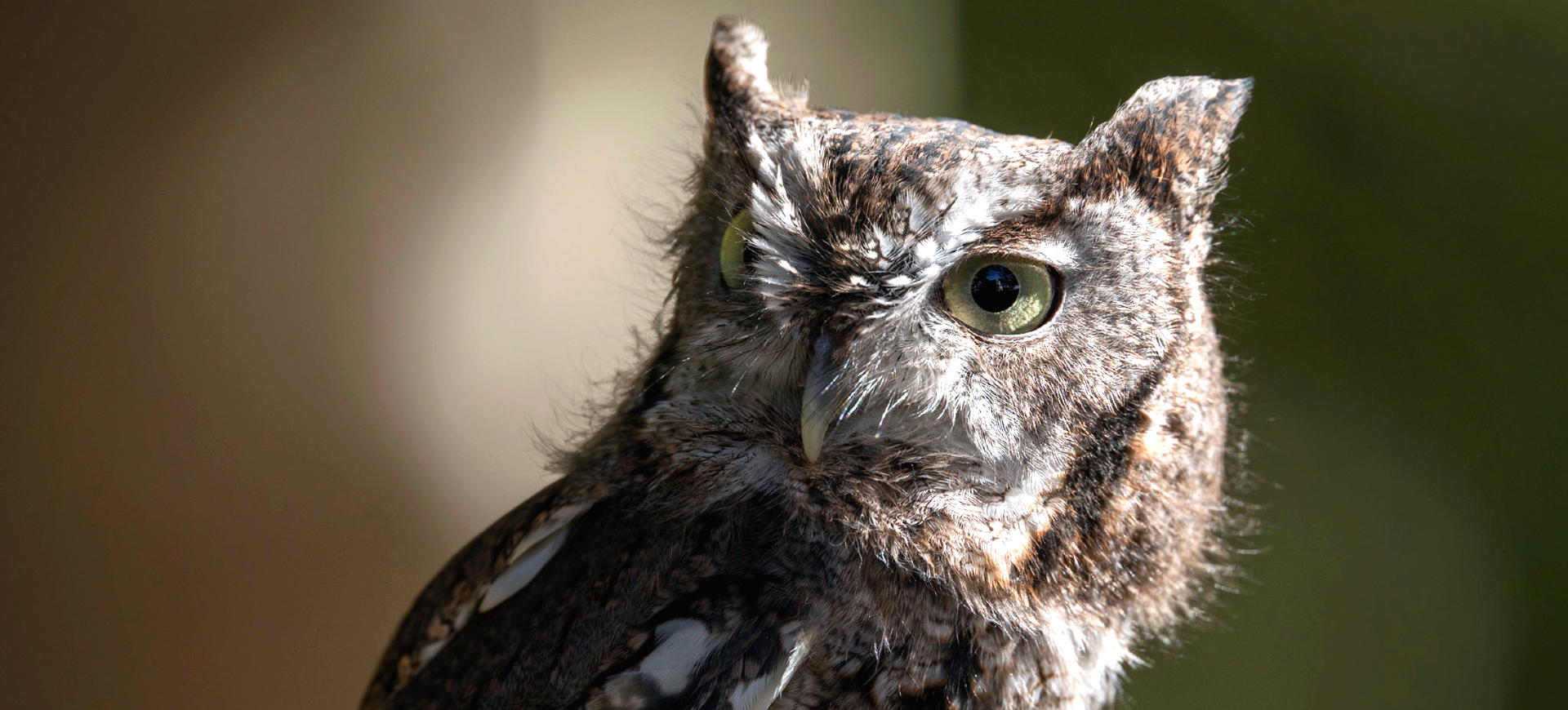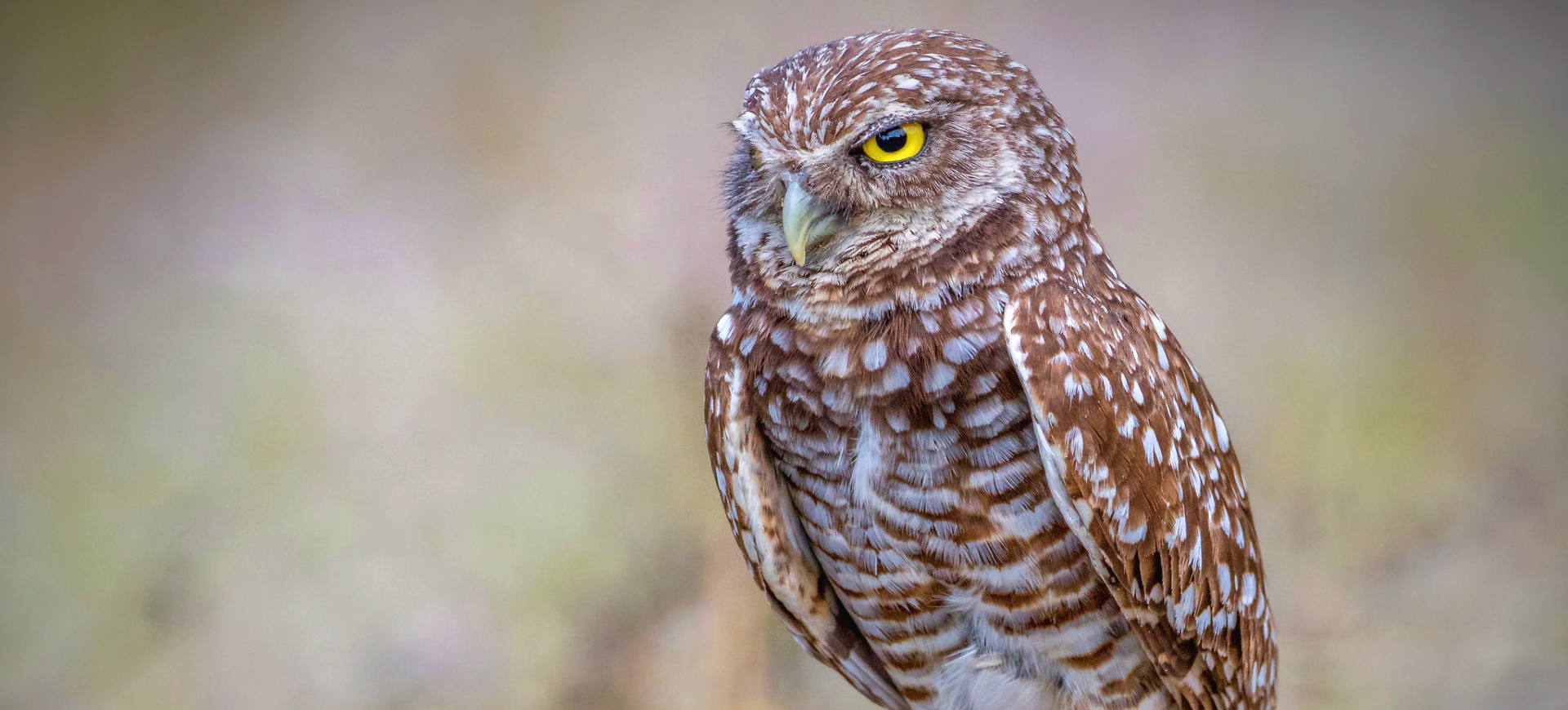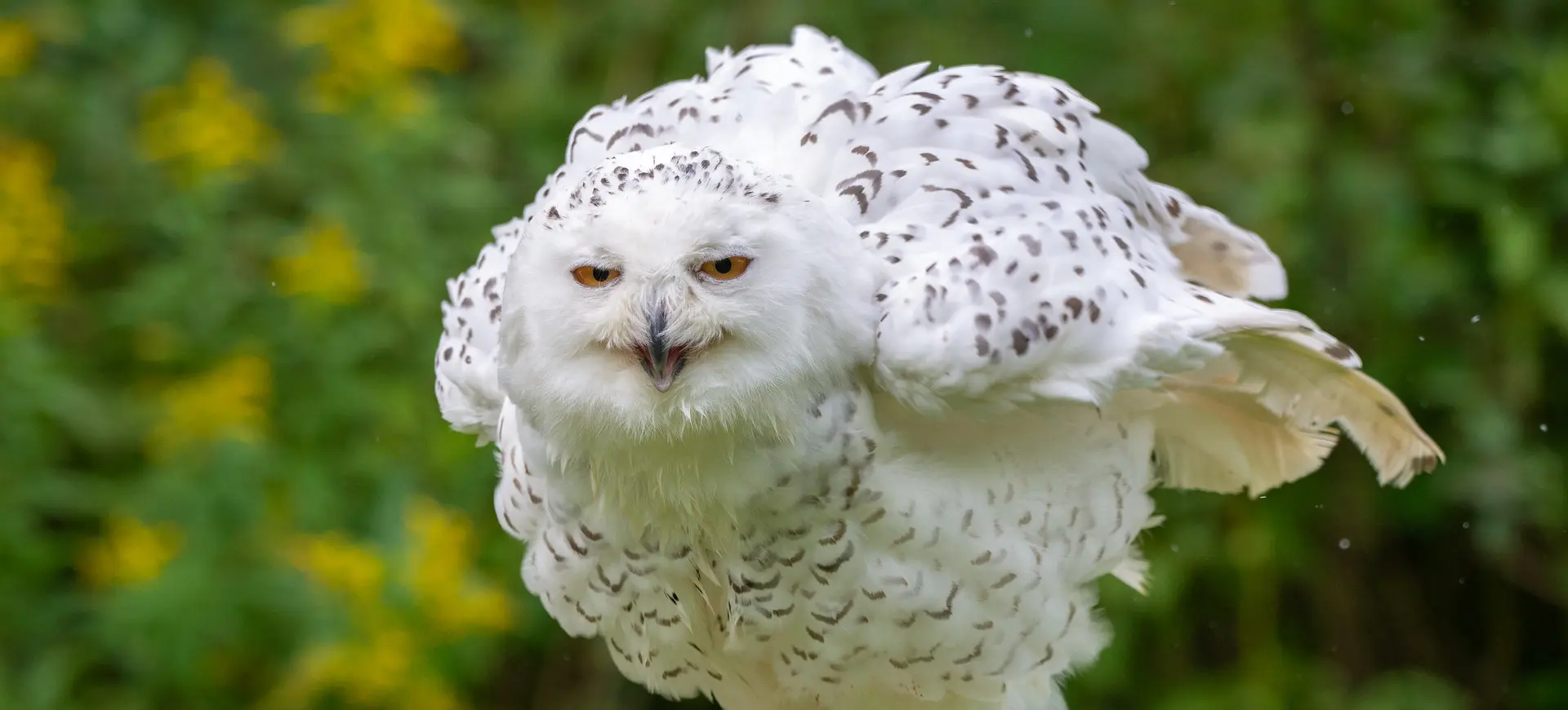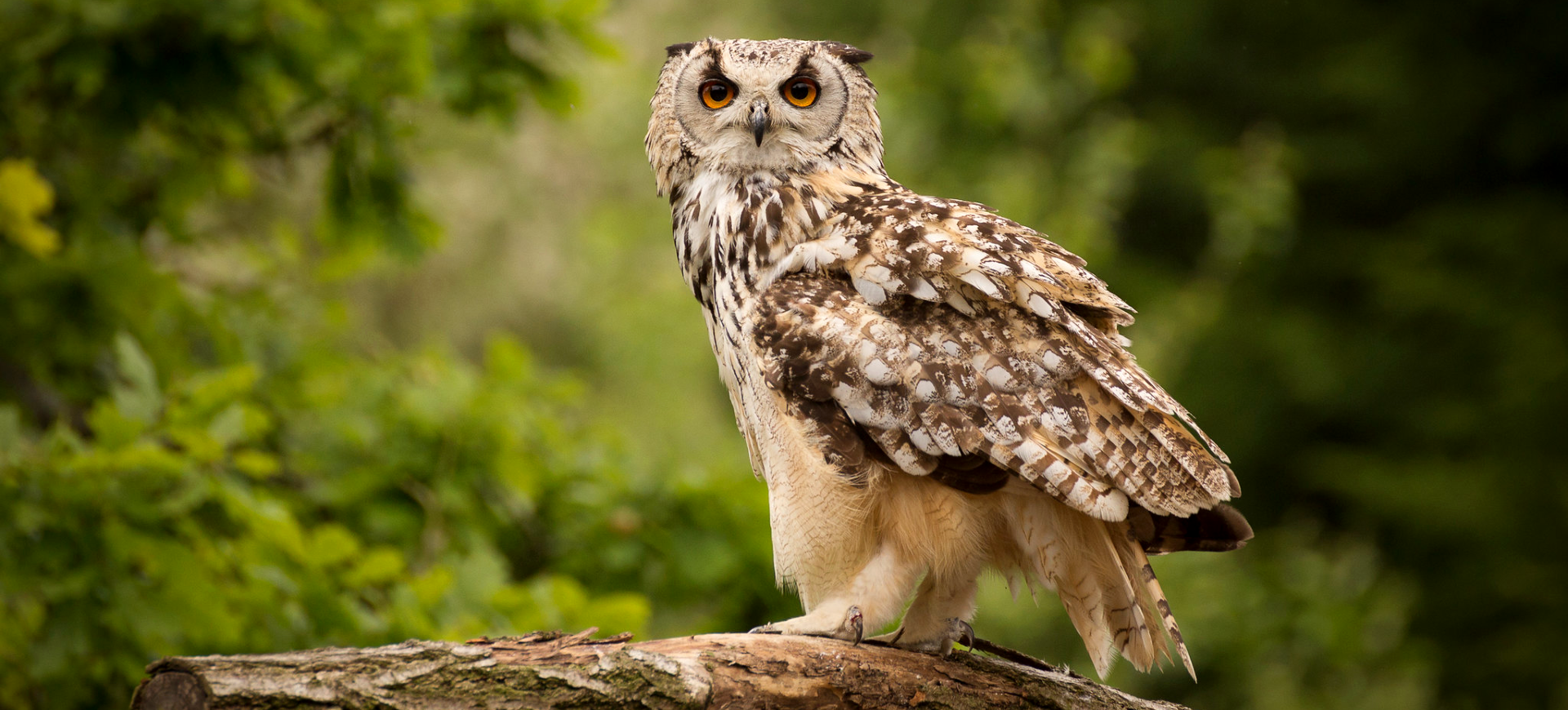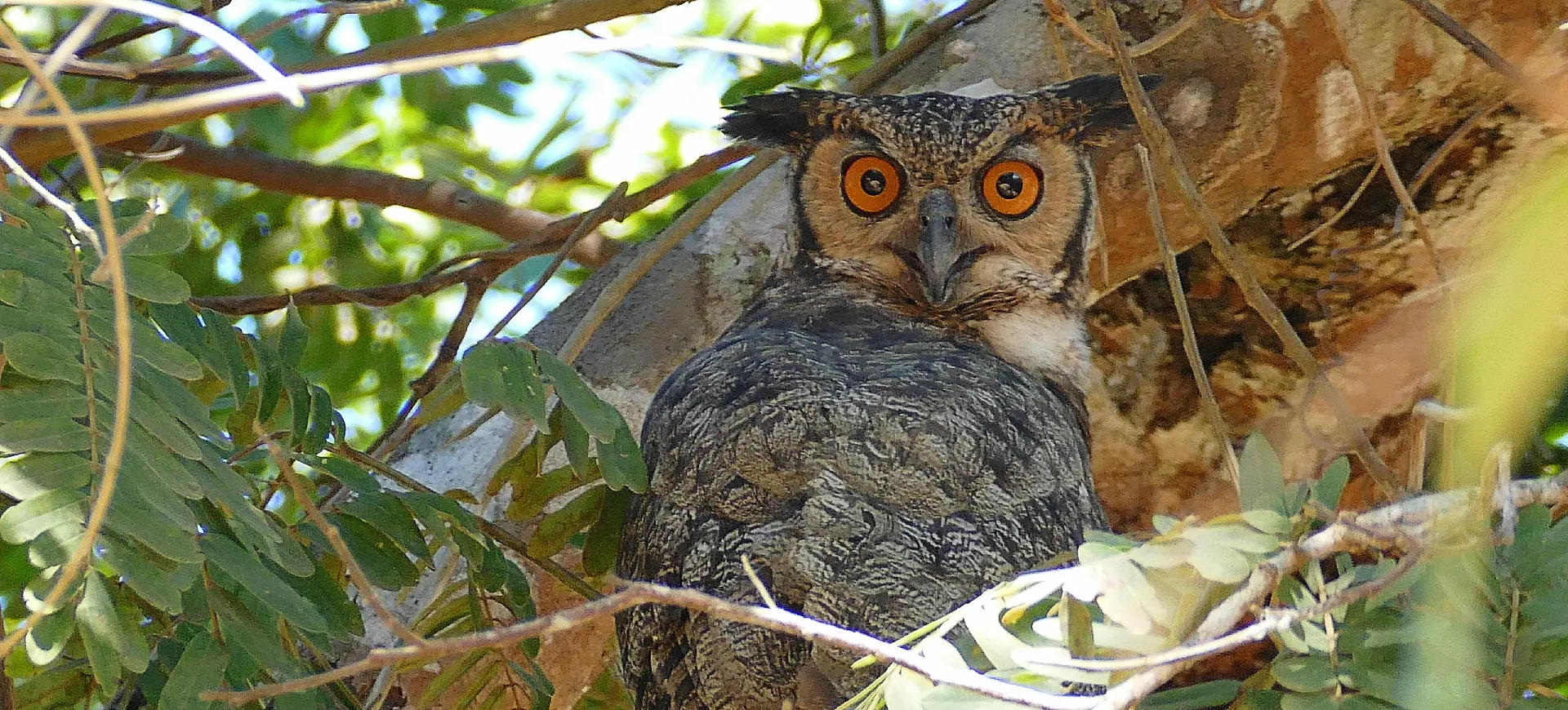Overview
The elf owl (Micrathene whitneyi) is the smallest owl species in the world, typically inhabiting desert and arid regions of the southwestern United States and Mexico. This diminutive bird is only about the size of a sparrow and is known for its large eyes and rounded head without ear tufts. Elf owls are nocturnal and primarily insectivorous, hunting small invertebrates such as beetles and moths during the night. They are migratory, often moving to southern regions during winter to avoid the cold and returning north for breeding season.
Elf owls are cavity nesters, usually residing in abandoned woodpecker holes in cacti or trees, such as the saguaro cactus or sycamore. Their ability to adapt to these environments protects them from many predators, including snakes and larger birds of prey. Despite their small size, elf owls are highly vocal, producing a variety of calls, including high-pitched “yip” and “chirp” sounds used for communication between mates. These owls are also known to engage in defensive behavior, such as faking death when threatened by predators.
Elf owls are generally solitary outside of the breeding season but become highly territorial during mating periods. They are monogamous, with pairs bonding over a shared nesting site and raising their young together. Breeding pairs will reuse successful nesting sites across multiple seasons, demonstrating a degree of site fidelity. Despite being widespread, elf owls face habitat loss and urbanization challenges, which impact their nesting and foraging habitats.
Taxonomy
Kingdom
Phylum
Class
Order
Family
Genus
Species
Type
Current distribution:
The elf owl is distributed across the southwestern United States, primarily in Arizona, New Mexico, Texas, and California, as well as parts of northern and central Mexico. They are most commonly observed in the Sonoran and Chihuahuan deserts during the breeding season. Migratory populations travel to southern Mexico for the winter, where they inhabit tropical and subtropical scrublands. While their range is relatively large, habitat fragmentation has caused declines in localized populations, especially in urbanized regions.
Elf owls are generally absent from high-elevation areas and restricted to lowland and foothill regions. However, they can still be found in relatively stable numbers in areas where their preferred habitats are intact, such as desert preserves and national parks. Mexico's populations face fewer threats than those in the United States, where agricultural expansion and urbanization pose significant risks. Conservation efforts focus on protecting key desert and riparian habitats essential for their survival.
Physical Description:
Elf owls are tiny, standing about 5 to 6 inches (12 to 15 cm) tall and with a wingspan of around 9 to 10.5 inches (23 to 27 cm). Their mottled brown and gray plumage helps them blend into their arid, desert surroundings, providing excellent camouflage. Their large, bright yellow eyes and lack of ear tufts distinguish them from many other owl species. Their beak is small and pale, suited for catching insects, which comprise the bulk of their diet.
Their body is round and compact, weighing between 1.4 and 1.6 oz (40 to 45 g), making them incredibly light for an owl species. The legs are long and lightly feathered, with sharp talons for gripping prey. Due to their small size, their wingbeats are rapid in flight, and they have a fluttery, moth-like flight pattern. Elf owls also have a short tail and rounded wings, which aid them in maneuvering through dense cactus and desert vegetation.

Lifespan: Wild: ~3 Years || Captivity: ~10 Years

Weight: Male: 1.4 oz (40 g) || Female: 1.6 oz (45 g)

Length: Male: 5 in (12 cm) || Female: 6 in (15 cm)

Height: Male: 5 in (12 cm) || Female: 6 in (15 cm)

Wingspan: Male & Female: 9-10.5 in (23 cm to 27 cm)

Top Speed: 30 mph (48 km/h)
Characteristic:
Native Habitat:
Elf owls are typically found in arid and semi-arid habitats, with a preference for desert scrub, saguaro cacti forests, and mesquite thickets. Their range spans from the southwestern United States, including Arizona, Texas, and California, to parts of Mexico, particularly Baja California and the Sonoran Desert. These owls are highly adapted to desert environments, often nesting in abandoned woodpecker cavities in large cacti or trees. They may also inhabit riparian woodlands where large sycamore and cottonwood trees provide suitable nesting sites.
Elf owls rely on saguaro cacti and other tall vegetation for nesting, but as these habitats diminish due to urbanization, they sometimes seek alternative nesting sites in human structures. Most commonly found at 2,000 to 5,000 feet (610 to 1,524 meters). Migrating populations winter in southern Mexico in warmer, lowland habitats, while some populations are resident year-round in their native ranges. This species’ ability to adapt to different arid habitats makes it resilient, though it is still vulnerable to habitat loss.
Biogeographical Realms:
Continents:
Countries:
Diet:
Diet & Feeding Habits:
Elf owls are insectivores, feeding on beetles, moths, grasshoppers, and crickets, which they capture during nighttime hunts. They are opportunistic feeders and have been known to prey on small vertebrates such as lizards or rodents if the opportunity arises. Their hunting technique involves perching quietly and using their excellent night vision and sharp talons to snatch prey. They often consume larger prey by returning to their nesting site or a perch and tearing it apart before eating.
Elf owls rarely drink water, as they obtain most of the moisture they need from their prey. During the breeding season, their diet may shift slightly to accommodate the nutritional needs of their young. Both male and female elf owls are involved in hunting to provide for their chicks during this time. Insects are abundant in their desert and arid habitats, making these food sources reliable, though urbanization has impacted some of their hunting grounds.
Mating Behavior:
Mating Description:
Elf owls are monogamous, typically forming pair bonds that last for the breeding season, although some pairs may reunite for multiple seasons. Males attract females by singing and offering food, and once paired, both sexes participate in defending the nest site. The female lays a clutch of 2 to 4 eggs in an existing cavity, often created by woodpeckers in cacti or trees. The female incubates the eggs for about 24 days, while the male provides food for her during this period.
Once the chicks hatch, both parents feed the young, bringing a steady supply of insects to the nest. The chicks fledge at about 30 days old but may stay near the parents for several weeks before becoming fully independent. Elf owls usually produce one brood per season, but they may attempt a second clutch if conditions are favorable. Their breeding season generally coincides with food availability and begins in March or April, continuing through June or July.
Reproduction Season:
Birth Type:
Pregnancy Duration:
Female Name:
Male Name:
Baby Name:
Social Structure Description:
Outside the breeding season, elf owls are typically solitary, maintaining territories where they hunt and roost. During the breeding season, however, they become highly territorial and will aggressively defend their nesting sites from intruders. Mated pairs often stay close together, sharing the nesting responsibilities and raising offspring. Social interactions outside mating pairs are rare, although they may occasionally be seen in loose foraging groups during migration.
Elf owls communicate with vocalizations, including high-pitched yips, chirps, and whistles, establishing territories and signals between mates. These vocalizations are particularly important during the breeding season when males use calls to attract females and warn off competitors. Elf owls also engage in defensive behaviors, such as feifakingath, when threatened by predators. While relatively solitary, they play a crucial role in the ecosystem by controlling insect populations.
Groups:
Conservation Status:
Population Trend:
Elf owl populations are relatively stable across much of their range, particularly in protected desert areas such as national parks and wildlife reserves. However, habitat loss due to urban development, agriculture, and land conversion has caused localized declines in some regions. The destruction of saguaro cactus forests and riparian woodlands, which provide critical nesting sites, is a primary threat to the species. In areas where habitat remains intact, such as Mexico, populations are healthier and more stable.
The migratory populations that breed in the United States and northern Mexico are particularly vulnerable to climate change and habitat fragmentation. Conservation organizations monitor these populations, but much of their range in Mexico remains less well-studied. Efforts to preserve critical habitats, such as desert and riparian ecosystems, are essential for maintaining their population. Though they are listed as Least Concern by the IUCN, continued habitat loss may pose future risks.
Population Threats:
The primary threat to elf owls is habitat destruction, particularly the loss of desert cacti and trees that provide nesting sites. Urbanization, agriculture, and land conversion for development significantly impact their desert and riparian environments. Pesticides also pose a threat, as they reduce the availability of insects, their primary food source. Additionally, climate change may alter the availability of nesting sites and the distribution of insect prey, further stressing elf owl populations.
Another growing threat is competition with other cavity-nesting species for limited nesting sites, such as woodpeckers and larger owls. In some areas, elf owls face predation from snakes, raccoons, and domestic cats, especially when they nest near human settlements. Wildfires, which are becoming more frequent in desert regions, also significantly threaten their habitat. Conservation efforts are needed to mitigate these threats and ensure the species’ long-term survival.
Conservation Efforts:
Conservation efforts for elf owls focus on preserving critical habitats, particularly saguaro cacti forests and riparian woodlands. Protected areas such as national parks and wildlife reserves play a key role in safeguarding these habitats from development and destruction. For example, protecting saguaro cactus habitats in Arizona has proven beneficial for elf owl populations. Habitat restoration projects that involve replanting native vegetation and protecting nesting sites are essential in reversing population declines in urbanized areas.
Public education and awareness programs also help reduce human impacts on elf owl habitats, encouraging practices like responsible pesticide use and protecting nesting sites. Conservation organizations are working to limit urban encroachment into desert regions and reduce the negative effects of habitat fragmentation. Continued research and monitoring of elf owl populations, particularly in Mexico, are necessary to better understand their conservation needs. Long-term efforts should focus on maintaining the delicate balance of desert ecosystems, which are vital to the survival of this species.
Additional Resources:
Fun Facts
- Elf owls are the smallest species of owl in the world.
- They are known to play dead when captured to avoid predation.
- Elf owls rely on abandoned woodpecker holes for nesting sites.
- They can survive without drinking water and getting moisture from their prey.
- Despite their small size, they are fierce hunters of insects and small prey.
- They migrate to warmer climates in winter, traveling long distances.
- Their eyes are adapted for excellent night vision.
- They can emit high-pitched yips and whistles to communicate with their mates.
- Elf owls are cavity nesters and rarely build their nests.
- They have been observed reusing the same nesting site for multiple years.













